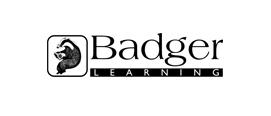Year 2: Uses of Everyday Materials
This list consists of lesson plans, activities and video clips to support the teaching of the uses of everyday materials at Year Two. It contains tips on using the resources, suggestions for further use and background subject knowledge. Possible misconceptions are highlighted so that teachers may plan lessons to facilitate correct conceptual understanding. Designed to support the new curriculum programme of study it aims to cover many of the requirements for knowledge and understanding and working scientifically. The statutory requirements are that children are taught to:
· identify and compare the suitability of a variety of everyday materials, including wood, metal, plastic, glass, brick, rock, paper and cardboard for particular uses
· find out how the shapes of solid objects made from some materials can be changed by squashing, bending, twisting and stretching.
Badger Science: Foundation and Key Stage One
Page 43 looks at the suitability of different materials for making a mirror. Children start by looking at windows and notice that sometimes they may see their reflection in them, especially when one side of the window is darkened. They then investigate which materials will make the best backing to produce a mirror effect.
Page 47-50 details lessons which look at how to test whether a material is suitable for a particular purpose by investigating which materials are most suitable for making a towel and which materials would make a suitable tent for a teddy bear.
Materials and their uses
These short films ssupport learning about prperties of materials in KS1..
Materials *suitable for home teaching*
This resource contains several activity sheets suitable for use in class or for follow up work. The sheets look at various aspects of this topic and include: identifying common materials and their uses, sorting and grouping objects, looking at natural and man-made materials and an assessment sheet.
Everyday materials: let's build
This resource contains 6 lessons on materials and is a good starting point for planning the topic. Children often think of ’materials’ as fabrics or textiles so may think that wood or metal is not a material at all and become confused. It is worth going through the key vocabulary with children to establish from the start that the word material may refer to any substance. Activities in which children identify materials and their properties are a great place to assess their level of understanding.
Explore, Discover, Inspire: Practical Work in Science
Work scientifically to test the effect of different amounts of sand and water on the strength of a sandcastle. Buckets, margarine containers, yoghurt pots or similar could be used to measure the amount of sand or water. They can be tested through observation, looking for cracks, falling down sanscastles ot even stress testing by putting a piece of card on top and then a container and adding marble to the container until the sand structure gives way.
The instructions given here are for slightly older children; I would ensure that KS1 children worked in small groups with adult support.




